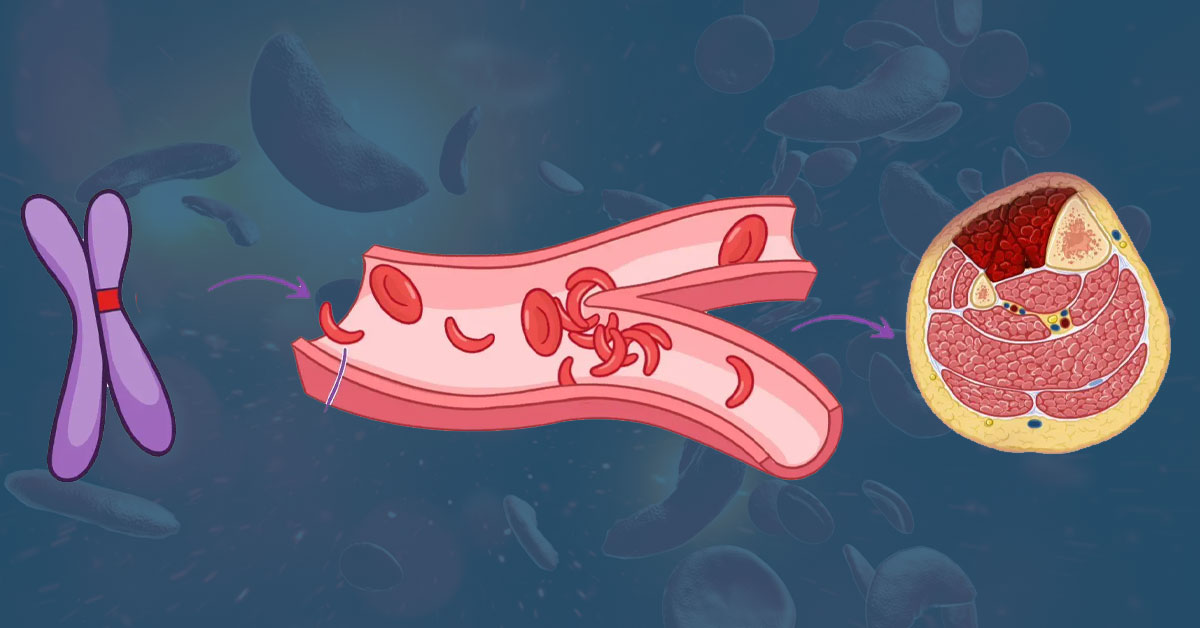KATHMANDU: Sickle Cell Disease (SCD) is a group of inherited blood disorders that affect the red blood cells.
The condition arises when there is a problem with hemoglobin, the protein in red blood cells responsible for transporting oxygen throughout the body.
In individuals with SCD, hemoglobin forms into stiff rods within the red blood cells, altering their shape.
While healthy red blood cells are smooth, round, and flexible—allowing them to glide easily through the bloodstream—those with SCD develop a crescent or sickle shape.
This abnormal shape can disrupt normal blood flow and lead to various complications.
Unlike the flexible, round red blood cells in healthy individuals, sickle-shaped cells can become stuck in small blood vessels, causing pain and potential damage to organs.
Sickle cell disease is also known as:
- SCD
- Sickle cell disorders
- Hemoglobin disease
- Hbs disease
- Sickling disorder due to hemoglobin S
The disease gets its name because when you have SCD your red blood cells look like a sickle, which is a C- shaped farm tool.
Types of sickle cell disease
There are several forms of sickle cell disease, and the type inherited depends on various factors, including the specific type of abnormal hemoglobin present.
Hemoglobin SS, also known as sickle cell anemia, is typically the most severe form of the disorder.
Other common forms include:
- Hemoglobin sickle beta thalassemia
- Hemoglobin SC (usually mild)
Rare types are:
- Hemoglobin SE
- Hemoglobin SD
- Hemoglobin SO
Causes
Sickle cell disease is caused by a problem in the hemoglobin beta gene found on chromosome 11. The defect forms abnormal hemoglobin.
- If you have just 1 gene you are healthy but you are a carrier of the disease. If 2 carriers have a chils there is a greater chance their child will have SCD.
- You are born with SCD only if 2 genes are inherited 1 from each parent.
- Parents who are each a carrier of a sickle cell gene have a 1 in 4 chance of having a child with SCD .
Other
- Infection
- Stress
- Low blood oxygen
- Dehydration
- Alcohol
Risk factors
- Genetic
- Psychological and physical stress
- Alcohol,tobacco products
- Infection
- Cold weather
- Low blood oxygen
- Dehydration (loss of fluids)
- Pain
Sickle cell Symptoms
Early symptoms may include :
- Fatigue
- Jaundice or a yellowing of the skin and the whites of the eye
- Painful swelling in the hand and feet
- Vision problems
- Developmental delays
- Frequent infection
- Anemia
- Pain crises
- Enlarged spleen
- Fever
Diagnosis
- Physical exam
- Blood test
- Genetic test
Other test that may be used to diagnose sickle cell disease include :
- MRI
- Hemoglobin electophoresis
- Restriction enzymes
- Image processing techniques
Treatment
- Relieving symptoms of the disease
- Preventing complications
- Avoiding pain crises
Medication
The following drugs may help reduce the risk of complications :
- L-glutamine oral powder (Endari ): This help reduce the number of sickle cells. It is suitable from the age of 5 years.
- Hydroxyurea (Hydrea) : This helps ensure the supply ofoxygen to the body.It is not to use during pregnancy.
- Voxelotor(Oxbryta): This helps boost levels of healthy hemoglobin. It is suitable fromthe age of 12 years
- Crizanlizumab-tmca: This can help reduce pain by preventing blood cells from sticking to blood vessels. It is suitable from the age of 16 years.
- Blood transfusions
- Stem cell transplants might cure the disease for some children and teenagers.
- Gene therapy
Complications
- Vision loss
- Stroke
- Deep vein thrombosis
- Kidney damage
- Liver ,heart damage
- Acute chest syndrome
- Gallstone
- Malnutrition (in young people)
- Joint and bone damage
- heart failure
- Pulmonary hypertension
- A higher risk of infection, which may have severe symptoms
Preventions
- Maintain healthy hygiene
- Avoid infections
- Avoid smoke
- Eat healthy food
- Drink water and other fluids to prevent dehydration
- Exercise safely
- Receiving vaccinations for flu,pneumococcal disease and meningococcal disease
- Reduce stress

